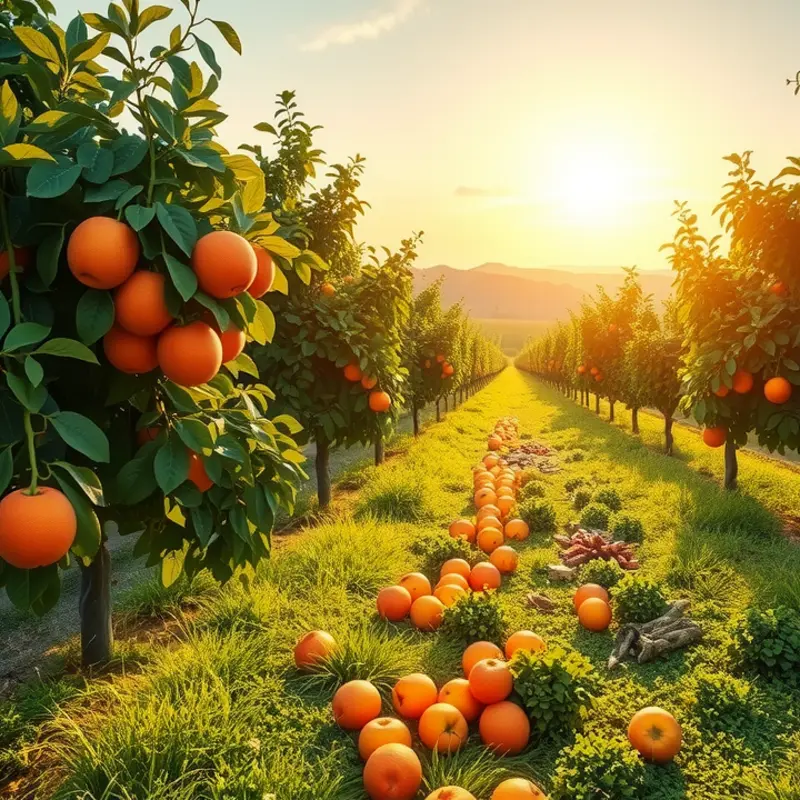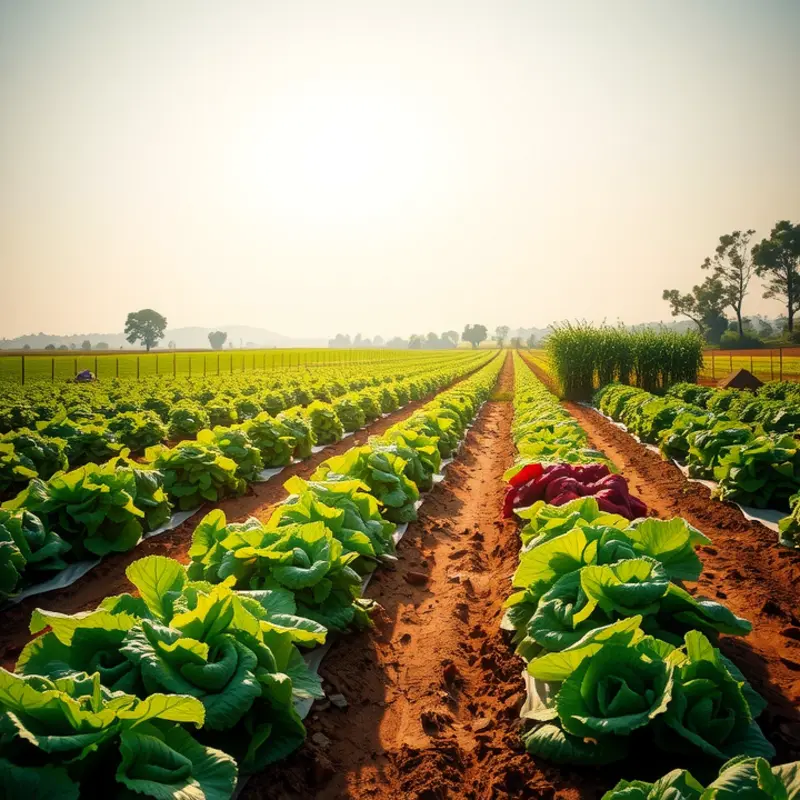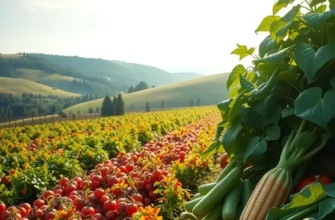Reducing kitchen waste is not just an environmental concern; it’s a simple and effective way to save money and enhance your culinary experience. By learning to store food safely, manage your pantry efficiently, and minimize waste, you can not only enjoy fresher ingredients but also contribute positively to sustainability. This guide offers clear strategies that anyone can apply, ensuring your kitchen is both eco-friendly and economical.
Safe Food Storage: Strategies for Longevity

Effective food storage plays a crucial role in maintaining both the freshness and nutritional value of the foods we consume. Mastering this can significantly reduce waste and improve both the taste and health benefits of our meals. Knowing the right conditions for each type of food can make all the difference.
Temperature Management
Temperature is a vital factor in food storage. Refrigeration is essential for most perishable items, such as dairy products, meats, and many fruits and vegetables. Keep your fridge at or below 40°F (4°C) to slow bacterial growth. For long-term storage, a freezer set at 0°F (-18°C) preserves food by halting bacterial activities nearly entirely.
While refrigeration is beneficial for many items, not all foods fare well in cold environments. For example, tomatoes and bananas lose flavor and texture when stored in the fridge. On the other hand, onions and potatoes prefer a cool, dark, and dry place like a pantry. It’s essential to know which foods thrive in varying temperatures.
Humidity Control
Humidity also significantly affects food longevity. Most fruits thrive at high humidity, which you can achieve by storing them in the fridge’s crisper drawer with a high-humidity setting. Conversely, vegetables such as onions and garlic should be kept in dry conditions to prevent sprouting and spoilage. Understanding humidity preferences can improve the storage life and quality of produce.
Proper Packaging
The right packaging can extend a food’s shelf life. Grains, such as rice and flour, should be stored in airtight containers to protect against pests and moisture. For leftovers, glass or BPA-free plastic containers provide a safe storage environment and allow easy visibility. Use labels with dates to track freshness and reduce waste.
Plastic wrap, aluminum foil, and resealable bags are also useful, but consider eco-friendly options like beeswax wraps, which provide an airtight seal and are reusable. Choosing the right packaging can both preserve food quality and minimize environmental impact.
Specific Food Storage Tips
- Grains: Keep them in airtight containers in a cool, dark pantry to protect from pests and moisture. Consider refrigerating nuts and whole grains to extend their shelf life.
- Fruits: Store in high-humidity drawers of the fridge. Avoid washing berries until you’re ready to eat them to prevent mold growth.
- Vegetables: Maintain proper humidity by using crisper drawers. Keep ethylene-sensitive vegetables separate from ethylene-producing fruits like apples, which can hasten spoilage.
- Dairy: Store milk and cream on a refrigerator shelf rather than in the door, where temperatures fluctuate.
- Leftovers: Cool foods quickly before refrigerating them. Label and date containers, making sure to consume them within 2–3 days.
Adopting these strategies can lead to fresher meals, less waste, and reduced grocery bills. For alternative storage solutions with an eco-conscious focus, explore eco-smart kitchen storage. By implementing these practices, you not only save money but also contribute positively to a sustainable future.
Smart Food Management: Planning to Reduce Waste

Smart food management begins with understanding the value of meal planning and inventory management. Not only does it reduce waste, but it also enhances the efficiency of your kitchen operations. Meal planning is a powerful tool that enables you to use what you have on hand more effectively and saves time and money.
Begin by taking stock of your pantry, fridge, and freezer regularly. Creating an inventory helps you avoid purchasing duplicates and ensures that you make the most of your existing supplies. A well-organized inventory list can highlight what you need to use soon, reducing the risk of food spoiling before you have a chance to enjoy it.
Learning to understand and interpret expiry dates is another crucial aspect of minimizing waste. Familiarize yourself with terms like ‘best before,’ ‘use by,’ and ‘sell by’ dates. These dates can guide how long items remain at their best quality but do not always indicate when an item is unsafe to consume. A simple sniff and look test can often help you determine if a product is still good beyond its ‘best before’ date.
Efficient use of ingredients involves creativity in the kitchen. Embrace the challenge of crafting meals without running to the store for missing items. Check out practical ingredient batching techniques that can help you maximize what you already have. By repurposing leftovers and rethinking those ‘less glamorous’ pantry ingredients, you can innovate new recipes that cut down waste significantly.
Grocery shopping with a plan can also contribute greatly to waste reduction. Prepare a shopping list that aligns with your meal plans and current inventory. This approach minimizes impulse buying and ensures you purchase only what you need. Additionally, consider the layout of the grocery store, starting your shopping journey in the produce aisle, and limiting detours through less necessary sections.
When storing your food items, proper technique enhances longevity and reduces spoilage. For instance, keep vegetables in breathable produce bags or containers designed to maintain moisture while allowing air circulation. Segregate those that emit ethylene gas, like bananas and apples, from other produce to prevent premature ripening. Investing time in learning storage techniques tailored to different food types can be rewarding.
Finally, harness technology in meal planning and inventory management. Numerous apps and tools can track expiry dates, manage shopping lists, and suggest recipes based on available ingredients. While the digital approach is beneficial, a simple notebook or a whiteboard in the kitchen can also do wonders for those who prefer an analog approach.
By focusing on strategic planning, efficient inventory management, and thoughtful shopping routines, you can significantly reduce waste and enhance your kitchen management. This mindful approach benefits not only your household but also contributes positively to environmental sustainability.
Final words
Reducing kitchen waste is an achievable goal that empowers you to create a more sustainable home. By implementing safe food storage techniques and adopting smart food management practices, you can significantly reduce waste while enjoying fresh and flavorful meals. Simple changes, such as meal planning and proper inventory management, can transform your kitchen into an eco-friendly space. Remember, it’s not just about reducing waste but also about enjoying the cooking process with better ingredients and mindful practices. Take these tips to heart and watch as your kitchen becomes a model of efficiency and sustainability.







